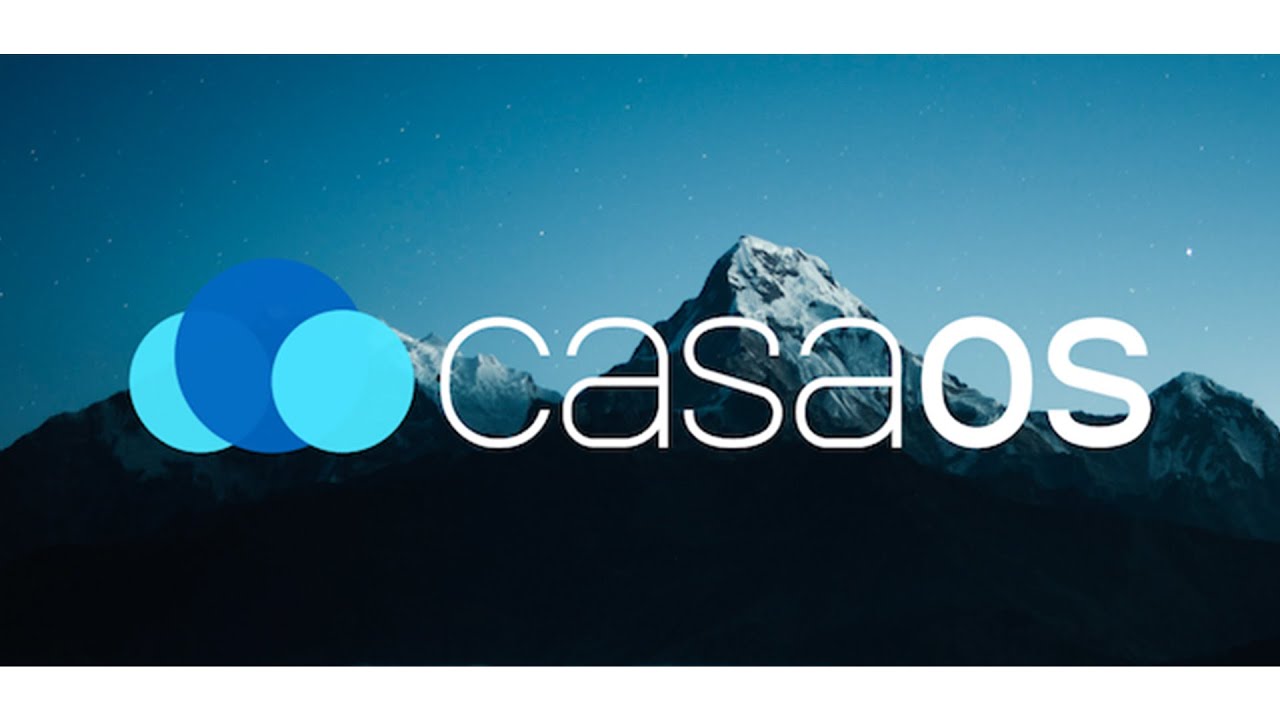In a world increasingly dependent on cloud services and subscription-based platforms, many tech enthusiasts and privacy advocates are turning to self-hosting as a more secure and customizable alternative. But let’s face it — managing home servers can be complex and intimidating, especially for beginners.
Enter CasaOS, an open-source operating system designed to simplify the self-hosting experience and turn any device into a powerful, personal server — with zero headaches.
What is CasaOS?
CasaOS is a lightweight, community-driven operating system that offers a simple and elegant web-based interface to manage Docker-based applications, storage, and system settings. It’s built for home users who want to create their own:
- Private cloud storage
- Media server
- Smart home hub
- Self-hosted app center
Think of it as your personal cloud — under your control and in your home.
⚙️ Key Features
1. 🧩 App Store Powered by Docker
CasaOS comes with a curated App Store of one-click installs — from Plex, Nextcloud, and Home Assistant to tools like Bitwarden, qBittorrent, and Jellyfin. These apps run in Docker containers, meaning they are isolated, lightweight, and easy to manage.
2. 🖥️ Beautiful and Intuitive Web Interface
No command-line knowledge? No problem. CasaOS provides a clean and responsive web UI for all major server functions:
- Installing/uninstalling apps
- Managing storage and volumes
- Monitoring system resources
- Controlling services and updates
3. 📦 File Management
CasaOS includes a built-in file manager so you can upload, download, move, or share files directly from your browser. It also supports mounting external storage like USB drives, NAS shares, or additional hard disks.
4. 🌐 Remote Access
Access your CasaOS server from anywhere with basic network configuration (or via a VPN), making it perfect for remote file access or streaming.
5. 🔐 Privacy-Focused
Your data stays local — no third-party tracking, cloud sync, or ads. CasaOS promotes digital sovereignty by giving you full ownership of your files, services, and usage.
🛠️ Use Cases
- Media Streaming: Turn an old PC or Raspberry Pi into a full-featured media center with Jellyfin, Plex, or Emby.
- Private Cloud: Run Nextcloud or Seafile for secure file syncing and sharing.
- Download Server: Use qBittorrent or Transmission for torrenting with web-based control.
- Home Automation: Integrate Home Assistant to control your smart home devices.
- Dev/Test Lab: Launch various web apps and databases in isolated containers for learning or development.
💡 Why Choose CasaOS?
| Feature | CasaOS |
|---|---|
| 🧠 Ease of Use | Beginner-friendly UI |
| 📦 Docker Integration | One-click containerized apps |
| 🛡️ Privacy Focus | 100% self-hosted, open-source |
| 🔁 Flexibility | Works on x86 and ARM devices |
| 👥 Community Support | Active open-source contributors |
Whether you’re running it on a Raspberry Pi, Intel NUC, or an old laptop, CasaOS is lightweight and optimized to perform without requiring beefy hardware.
🚀 Getting Started
- Head to the official site: https://www.casaos.io
- Follow the installation guide (supports Ubuntu 20.04+, Debian, and ARM-based boards).
- Access the web UI at
http://your-device-ip:port - Explore the App Store, configure storage, and enjoy your new home server!
CasaOS also provides pre-built images for devices like Raspberry Pi, making setup even easier.
🛠️ Under the Hood (For Techies)
CasaOS uses Docker to orchestrate applications, with a front end built using modern web technologies. Its core services are modular, allowing future extensibility. If you’re comfortable with YAML, Docker Compose, or Linux CLI, you’ll find it easy to customize your setup beyond the UI.
Final Thoughts
CasaOS strikes a rare balance — it’s beginner-friendly and powerful enough for advanced users. Whether you’re a self-hosting veteran or just getting started, CasaOS offers a plug-and-play gateway into the world of personal servers, free from vendor lock-in and packed with potential.
If you’re looking to reclaim your digital life, CasaOS is a great place to start.
